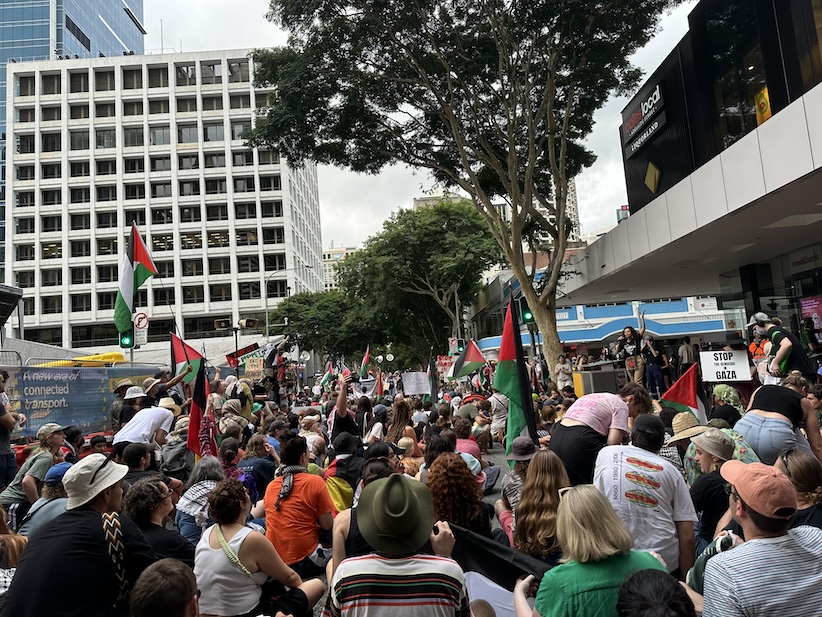 Several hundred, young and old, held a public rally and march today calling for federal, state and local governments to cut direct support for Israel and businesses doing business with Israel at this time. Not many by a long shot, and of course it was ignored even by the local TV news media. Among the speakers was one from a very small number of anti-Zionist Jews. He spoke of some of his extended family refusing to have anything to do with him because of his stance. I took it as a disheartening reality check that the newly formed Jewish Council of Australia is a not a large body.
Several hundred, young and old, held a public rally and march today calling for federal, state and local governments to cut direct support for Israel and businesses doing business with Israel at this time. Not many by a long shot, and of course it was ignored even by the local TV news media. Among the speakers was one from a very small number of anti-Zionist Jews. He spoke of some of his extended family refusing to have anything to do with him because of his stance. I took it as a disheartening reality check that the newly formed Jewish Council of Australia is a not a large body.
It was interesting to hear that it is worth trying to pressure even local government to take a stand. The Brisbane City Council had our Story Bridge lit up in the colours of the Israeli flag after the October 7 events (though all the emphasis in the news at the time, and the news that shocked the world, was not on the crimes that Hamas did commit but on the crimes that they did not commit). Since then, requests to light up colours in support of Gaza at this time have been flatly rejected.
There’s a long way to go yet. Something happens to you when you are involved in a rally and march like that. I have learned enough about the nature of rituals from studies of religion to recognize how this ritual works in a similar way: the bonding one feels with others, with seriousness of purpose but with good humour and camaraderie, the vicarious identification with distant people and events and the bringing of those distant people and events close to us. The drums, the applauding, the chanting, the laughter — bonding all to something bigger. Some rituals are acted out behind closed doors. Others are public and meant to be noticed. Hopefully in shorter time rather than too much longer more of those bystanders who appear to look at us as if we were strange exhibits in a circus parade (or simply as “bad protesters”) will learn more about why we are doing what we are doing and also take action in different ways. It’s happened before. But I don’t want to look back and say I did nothing. I met our local member/representative a few days ago. I will let him know what government action I believe he should be pushing for. I’d like to do a little more in cooperation with local activists to help raise public awareness — to add one more voice to those pushing back against the local impact of mainstream media and the pablum spin of politicians.


